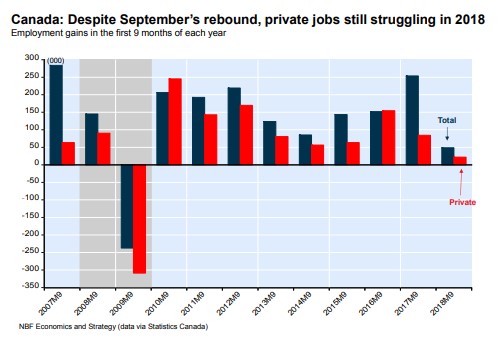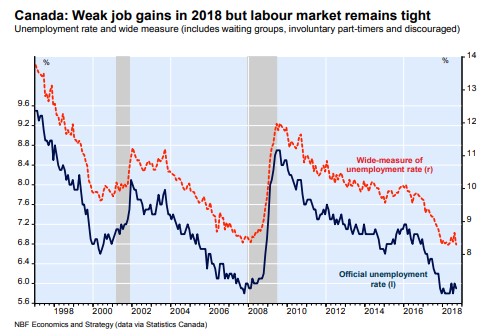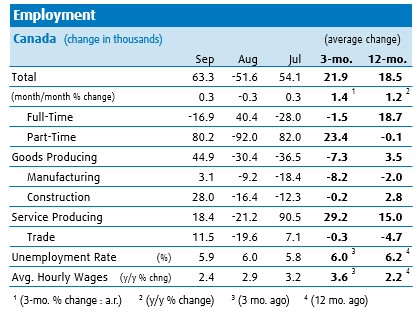Canada’s monthly job market figures are very volatile and rather erratic. Statistics Canada’s latest monthly report for September certainly continued the erratic pattern.
The labor force survey (LFS), which is based on a household sample, reported a huge increase of 63,000 jobs in September, compared to an almost equal sized loss of jobs in August. The unemployment rate dropped to 5.9% in September from 6% in the previous month.
Part-time employment surged by 80,000 in September even as the economy shed 17,000 full-time jobs. Service sector employment rose by 18,000 in September, while manufacturing employment shrunk by 3000 jobs.
The strongest industry in September was the construction sector, which increased employment by 28,000, even though construction employment had declined in four of the previous five months.
Thus, if one desires a more accurate picture of employment in the Canadian economy, one should refer to changes in over long periods of time, either three months or twelve months. For example, the pace of job growth averaged close to 22,000 per month over the last three months.
Employment in Canadian manufacturing declined by more than 8000 jobs per month over the past three months, while service sector jobs escalated at 29,000 monthly rate over the same period.
Finally, over the past year the Canadian economy created 222,000 new jobs since September 2017, and in this case, virtually the entire twelve-month job gain was in the full-time category.
Average hourly wages continued to moderate in September after a spike earlier in the year. Wages slowed to a 2.4% y/y pace from 2.9% August and the 3.3% peak at the start of the year.












Leave A Comment